While do-it-yourself projects can be fun and fulfilling, there is always a potential for personal injury or property damage. We strongly suggest that any project beyond your abilities be left to licensed professionals such as electricians, plumbers, and carpenters. Any action you take upon the information on this website is strictly at your own risk, and we assume no responsibility or liability for the contents of this article.
How to Hang a Door

Hanging a door is one of those household DIY tasks that is a little more complicated than it may first appear. Like with windows, it’s essential to get a perfect fit in all three dimensions for the door to work smoothly and without issue. If any one part of the installation is off-skew, the door can stick, rub against the frame, or squeak loudly. Or it may refuse to close at all if there’s too much discrepancy. Even so, it’s not too hard for a homeowner to learn to do on their own with enough care and patience. Using a pre-hung door is generally the easiest option, but replacing an existing door or framing in new construction isn’t beyond most handy homeowners either.
Pre-hung Doors
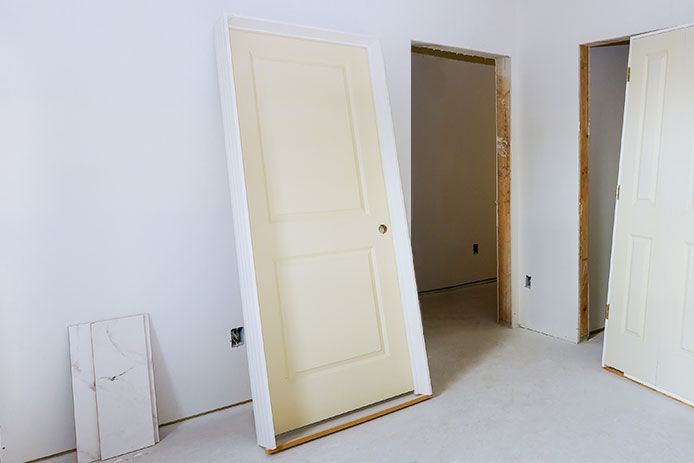
While pre-hung doors are quick to install because they already have a frame in place, there’s still plenty of preparation required to get the rough opening ready for it. First, using a pre-hung door to replace an existing one means removing the frame from the former door. There’s no way to fit the frame of the pre-hung door into an existing door frame. If you’re unfamiliar with removing trim and lumber without damaging the drywall, take extra care and work slowly.
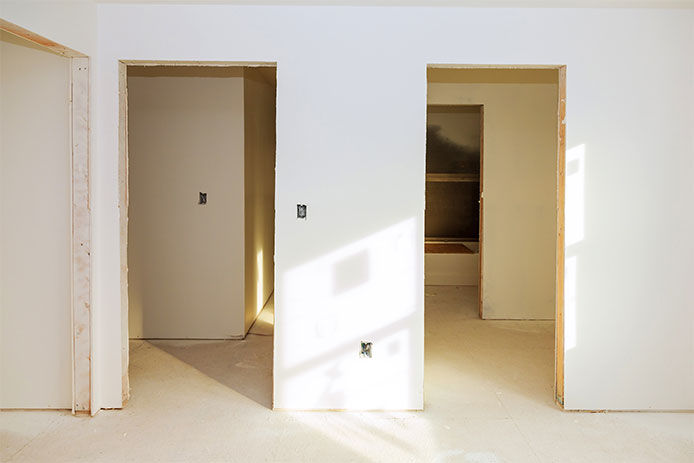
Once the door is out, and the lumber framing the old door is removed, you should have an empty door opening ready for installation. Watch out for the fragile edge of the exposed drywall and loose insulation materials. It’s usually best to measure the opening after the old door is removed to ensure a good fit with the new frame on the pre-hung door. The frame on the new door may be thicker or thinner than it was on the old one, so measuring while the frame or door is still in place could lead to a poor fit in the actual wall opening. Ensure that the handedness, or the side on which the door handle is installed, is the same as the old door to the new one.
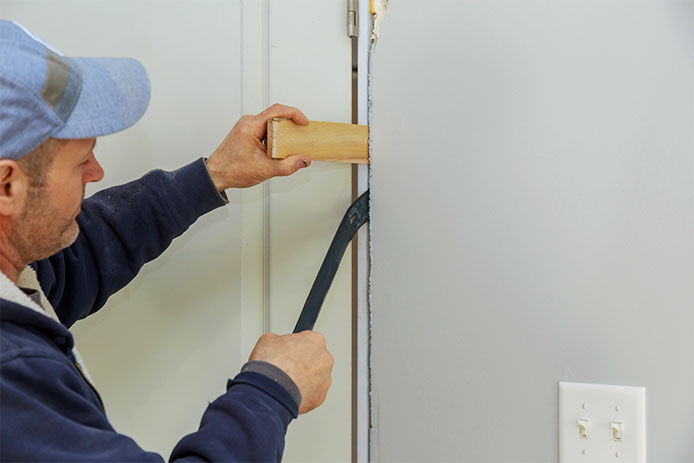
Slide the pre-hung door slowly into the door opening, taking care not to tip it or jam it against the fragile wall edges. Slide it against one side until the jamb is flush against the wall opening. With the frame resting against at least one wall, open the door to test if it rubs on the floor or anywhere else. Grab a spirit level and check the level of the frame at the top. Use shims along the bottom and sides to reach a level state. Then use a plumb line to check the door is plumb at the jamb, adjusting with shims against as needed. These can be trimmed up before the trim is replaced. Make sure to use larger shims anywhere there are substantial gaps over ½ inch between the wall and door frame.
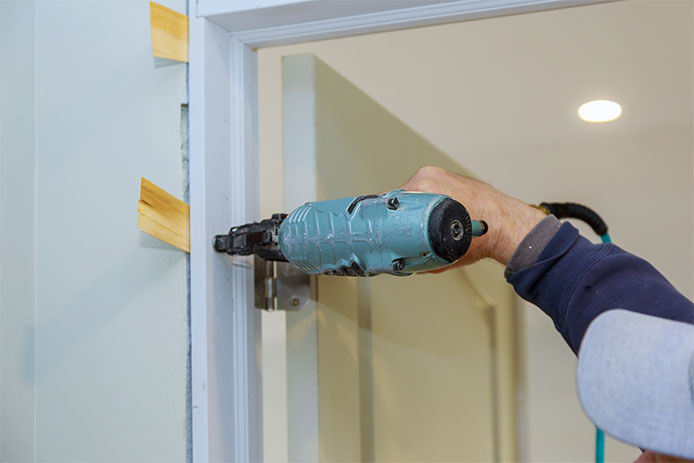
Nail through the frame and into the surrounding wall studs with finishing nails. Use two nails on each shim, and use at least two nails on each side of the frame. Test the level, plumb, and swing of the door after attaching each side of the frame so you can adjust the shims as needed before fixing them in place.
Finish up with the door trim and hardware.
Existing Frame for a Door Replacement

If you want to skip the step of removing the frame while installing a replacement for an existing door, consider a bare door. Also called slab doors, these are inexpensive but require a little more expertise and a lot more balancing with care to get a good fit. Pre-hung doors will only stick or squeak when poorly leveled and plumbed, but a slab door may not open or shut at all if it’s off-kilter during installation.
- Start by removing the old door and ensuring the frame is in good condition.
- Next, remove all the trim around the door, the door striker plate, and any other hardware.
- Then, measure the old door once it’s removed. This should result in a perfect fit and is easier than accurately measuring the frame. You can even cut the slab door to fit using the old door as a template if you still have it on hand.
- Once you’re sure the slab door is perfectly sized, attach the hinges while it’s on the ground. You’ll likely have to notch out the spaces for the hinges and drill an opening for a doorknob, allowing you to install it in any direction you prefer.
- Finally, match the handedness of the old door if you are buying a slab that’s already pre-drilled.
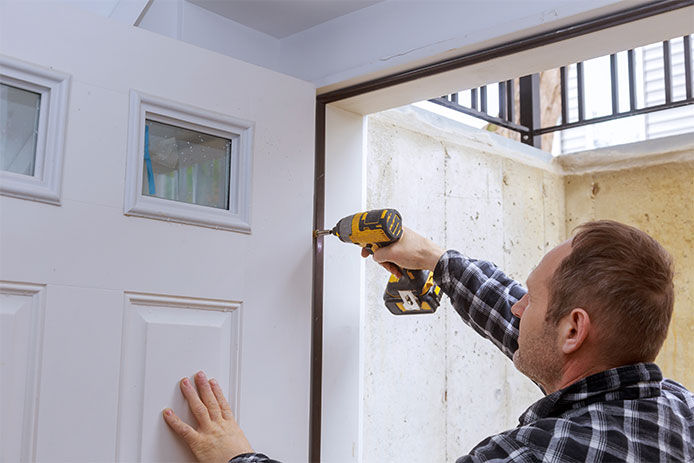
Stand the door up in the frame with shims on the floor at the height of the preferred clearance. For most homes with smooth floors, 1/8th inch is preferred, but 1/4th inch clearance may be needed for carpet. Check the door is positioned level and plumb, then screw the hinges into the door frame. Testing the swing of the door and adjust the hinge fit as needed. It may take several tries to remove and adjusting the fit with temporary shims to get the door balanced just right in an existing frame. Finally, finish installing the hardware and replace the trim.
New Construction: Framing from Scratch

Hanging a pre-hung door is faster when finishing new construction. Building frames for a dozen or more doorways in a home takes a lot of time than simply fitting the pre-hung frames to the openings. If you build a frame from scratch, you’ll have to measure and cut the hinge mortises on the frame to match each door’s pattern. You’re also responsible for getting the striker plate placement perfect and other details. If you’re building your own home or just finishing out construction started by the pros, stick with pre-hung doors when possible.
Hanging new doors can transform spare rooms into quiet and private bedrooms, not to mention giving homes a fresh look. Don’t put up with damaged, out-of-date, or flimsy interior doors when most homeowners can easily handle this kind of installation on their own.